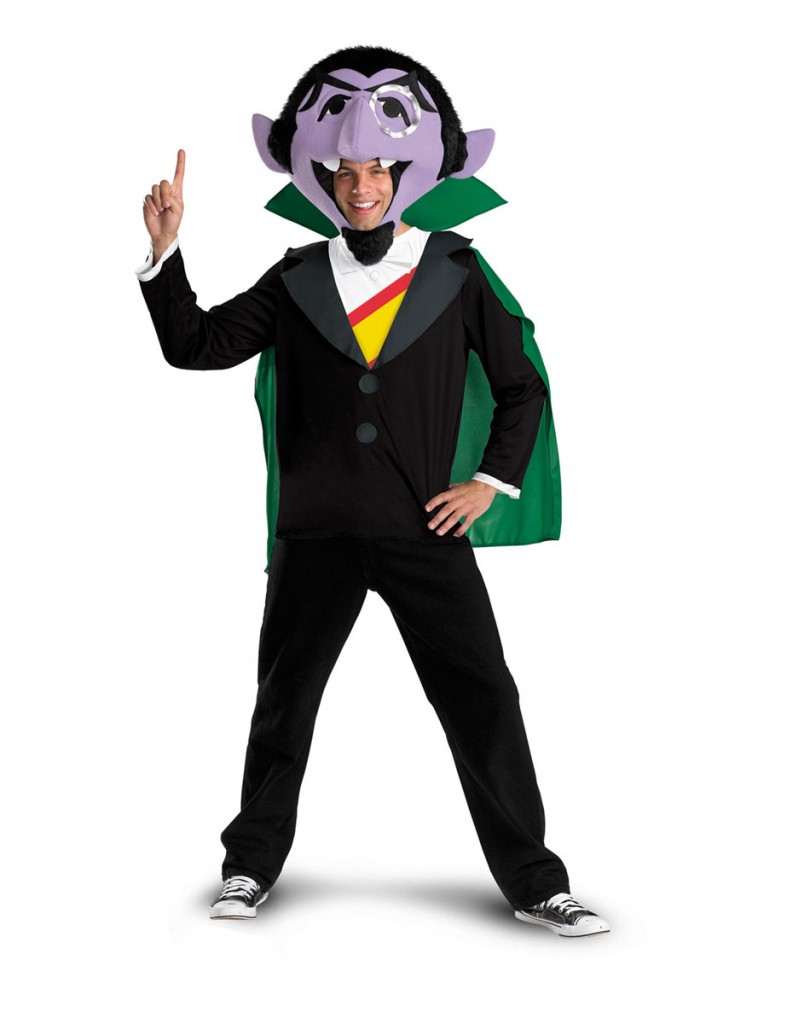Putting the "e" in "The Simpsons"
I think we can safely agree that The Simpsons isn't the show that it used to be, but there are moments when its former charm shines through. As it pertains to the material of this blog, I was particularly pleased with a joke that ran on their Christmas episode. I have been meaning to tip my hat to this joke for some time, but it has been hard to find a spare moment to do so.
The joke ran at the end of a muppet-themed segment of the show. In an homage to Sesame Street, after the segment finished (but before the somewhat racy joke involving a very physical muppet Moe) an announcer stopped to give thanks to the sponsors of the show. Unlike Sesame Street, however, which is sponsored every day by two letters and a number, this episode of The Simpsons was sponsored by one symbol and one number that looks like a letter:
In case you're late to the party (since I don't think that clip will be online forever), let me quote: "Tonight's Simpsons episode was brought to you by the symbol umlaut...
Addendum to Math Gets Around: The Humanities
Last week we discussed an example of when a mathematical background might prove useful even in the least quantitative of liberal arts courses. More specifically, we asked the question: if a teacher gives you a list of N questions, tells you that M will be on an exam, and you must answer K of the questions given on the exam, what's the minimum number of questions you should prepare to guarantee that you will be able to answer K of the questions on the exam? (Answer: N + K – M.) We also looked at the question probabilistically - namely, we saw that of the questions appearing on the exam, the number that you've prepared for follows a hypergeometric distribution.
As a concrete example I considered the case N = 6, M = 5, K = 3 - in this case, the minimum number of questions you should prepare to guarantee that you can answer 3 of 5 problems on the exam is 4, and we saw that if you only prepare 3 questions, you have a 50% chance of those 3 questions appearing on the list of 5.
Late last...
Math Gets Around: The Humanities
Unless you're one of those suckers who goes to a school that administers final exams after the holidays (like I was), the few weeks after Thanksgiving can be quite a stressful time for students. Between exams, final papers, and working out holiday travel plans, it can be easy to get overwhelmed. For students with a quantitative bent, the days are undoubtedly spent in large part trying to memorize formulas or theorems, or on refining their understanding of certain problem-solving techniques that have been covered in their courses.
If your interests are more in line with the humanities, you may think that you are safe from the pull of mathematics. There are occasions, though, when a working knowledge of mathematics can help even in a liberal arts course.

Spicoli certainly could've benefitted from a stronger math background.
Consider the following example. Suppose you're enrolled in a course for which the final exam will have a large essay component. To help you study, your teacher...
Pi, I Shake My Fist at You
A couple of days ago I watched a video that really depressed me. Here's a link to a local news story from Ankeny, Iowa - I'd encourage you to take a look at the news clip there (unfortunately, I can't embed it here). The story concerns a 6th grade student who has memorized the decimal expansion of pi to 340 or so digits.
In and of itself, this might not seem like a particularly newsworthy achievement - as any Pi Day aficionado can tell you, there are people who have memorized more digits. Perhaps what makes it newsworthy is the fact that the student is only twelve years old, or, more perversely, the fact that his accomplishment came in response to the challenge of his math teacher, who asked his students to memorize as many digits of pi as possible. By far the most depressing part of the video is a brief clip that shows all the students in the classroom mindlessly rattling off successive digits of pi. The lack of enthusiasm is almost palpable.
Now, I don't want to come off as...
Instant Runoff Voting in Oakland
Earlier this month, Oakland elected its first Asian American to the less than coveted role of city mayor. Jean Quan emerged victorious this election day, although at one point she was trailing her opponent by 11 percentage points. Understood in context, however, her victory is perhaps less surprising - rather than winning by Plurality, Quan won under Oakland's Instant Runoff Voting system.

I don't know much about Oakland politics, but this picture sure makes her look ready for business.
What's the difference? For most elections in the United States, voters are instructed to cast their vote for the individual who they would most like to see get elected. These votes are tallied, and the one with the most votes is declared the winner. In contrast, the Instant Runoff Voting system asks voters to rank several candidates at once - this extra information is used to automatically determine the outcome of a runoff if no candidate has a majority of first choice votes.
For a more detailed...
A Sufficient Mathematical Background
A couple of weeks ago, the Washington Post ran an op-ed written by G. V. Ramanathan, emeritus Professor in mathematics, statistics, and computer science, entitled "How much math do we really need?" As the title suggests, Ramanathan uses his space in the paper to argue against the grain of conventional wisdom when it comes to mathematics education; his point is that American students are actually receiving too MUCH math, rather than not enough. It's an appealing thesis, especially for those looking for an excuse to embrace their own math phobia, but ultimately I find it to be less than responsible.
Consider, for example, the following passage:
How much math do you really need in everyday life? Ask yourself that -- and also the next 10 people you meet, say, your plumber, your lawyer, your grocer, your mechanic, your physician or even a math teacher.Unlike literature, history, politics and music, math has little relevance to everyday life. That courses such as "Quantitative Reasoning...
Optimal Base Running
Now that the World Series is upon is, I thought I might take a moment to discuss the latest results in the field of optimal base running. On the face of it, this may seem like a non-issue; after all, as any decent student of geometry will tell you, the shortest distance between any two plates is a straight line.
In a game of baseball, however, it's more important to minimize time, not distance. Given this, running a path that consists of four straight lines connecting each base is not optimal, because the runner must slow down to make the sharp turns at each base. Of course, baseball players already know this, which is why they often swing out in their path before crossing first when they are confident that they can reach second or more. But still, the question remains: are these trajectories optimal?
According to a trio of mathematicians from Williams College, maybe not. According to an article originally posted in May, but which only now seems to be gaining some traction, recent...
RIP Benoît Mandelbrot
It has already made the internet rounds, but it seems appropriate, given his popular appeal, to remark on the passing of mathematician Benoît Mandelbrot. Mandelbrot, perhaps best well known for coining the term fractal (and for his related popular work on the subject), died last week at the age of 85.
Mandelbrot's popularization of fractal geometry garnered him quite a bit of attention beginning in the 1980's. There is even a fractal named after him, the so-called "Mandelbrot set," which, like many fractals, is simple to generate, but looks complicated.

It's no coincidence that popularity in fractals rose in step with advancing computer technology. Without computers to perform the tedious calculations necessary for fractal generation (and by extension, to output all the pretty pictures), the field received much less attention. Contrary to popular belief, though, Mandelbrot was not the first to consider these ideas - indeed, many properties of fractal sets called "Julia sets"...
Math Goes Trick Or Treating Yet Again
Another year, another night of dressing in costumes on a quest for candy and/or debauchery. In previous years, I've tried to encourage mathematically influenced Halloween costumes (see here and here), and so if for no other reason than the sake of consistency, this year will be no different. Here are some new ideas for 2010:
1. The Count
This costume idea was suggested to me in the comments section of last year's list. Known and loved by children and adults alike, this costume would give the wearer ample opportunity to teach children about the wonders of math. If you're one of those people who give out pennies or toothbrushes, though, I would caution you against this costume decision, since the combination of a lack of candy and an insistence on discussing mathematics may dramatically increase the likelihood of you being at the receiving end of a "trick."

This dude can totally count to 1.
Then again, one way to strike fear into the hearts of children while simultaneously dressing...
Would You Like Math With That?
Last week, my friend Jon forwarded me this article posted on CNN's Eatocracy blog. In it, writer Laurie Segall describes the number of possible burger combinations at a restaurant in New York City called 4food. Using some elementary combinatorics and the brain power of her statistician husband, together they calculated that the number of possible burgers one could order at 4food is 1,598,238,720. This is assuming that one follows the rules of the restaurant; if you want the option of including all 12 condiments on your burger, rather than sticking to the suggested limit of 0-3, and similarly for the cheese options, the number of combinations jumps to 96,639,764,160 (roughly a 60-fold increase).
This reminded me of a similar calculation I had been meaning to do for the chain of hamburger restaurants called The Counter. Founded in Los Angeles in 2003, The Counter has since branched out across the country, and has even gone international with locations in Ireland and Australia. And...
Page 9 of 20

